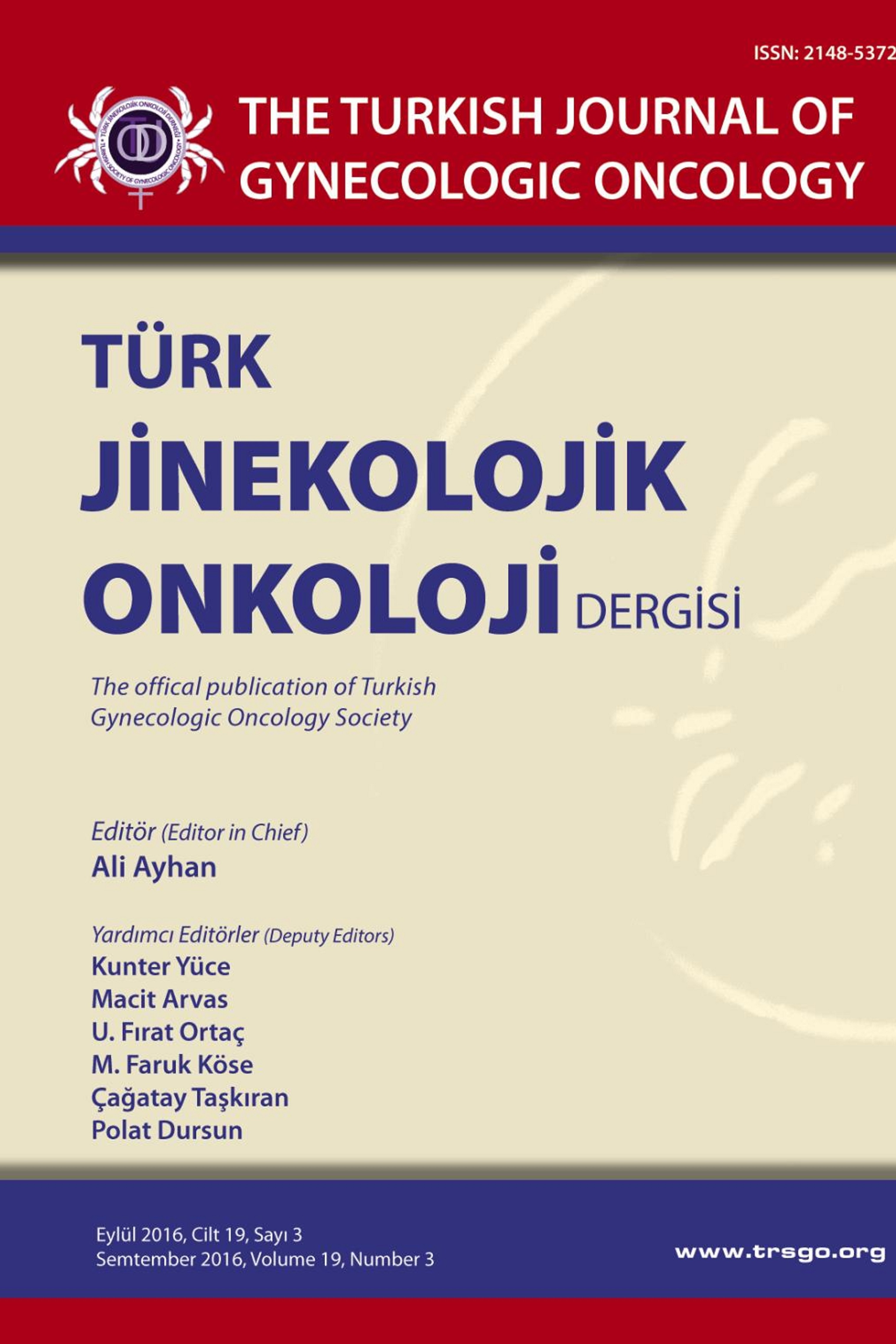OVER NEOPLAZİLERİNDE ANGİOGENESİS VE NEOVASKÜLARİZASYONUN ARAŞTIRILMASI
Amaç: Bu çalışmada Zekai Tahir Burak Kadın Sağlığı Eğitim ve Araştırma Hastanesi patoloji bölümünde değerlendirilen ve tanı alan 100 adet ovarian neoplazi olgusu kullanılmıştır. İmmünhistokimyasal yöntemle F VIII ve CD 31 primer antikoru kullanarak over neoplazili olgularda neovaskülarizasyonu göstermeyi planladık.Materyal Metot: Olgular immunhistokimyasal yöntem kullanılarak ve Faktör 8 primer antikoru ile CD31 primer antikoru kullanılarak boyandı. Bu vakaların 78 tanesi yüzey epitel kaynaklı tümör, 9 tanesi germ hücreli tümör, 8 tanesi seks kord stromal tümör ve 5 tanesi metastatik krukenberg tümörü idi. Vakalardan 85 ine lenf nodu diseksiyonu yapılmıştı ve bunlardan 25 olguda lenf nodu metastazı pozitifti. Vakaların klinik takiplerinde 10 vakanın eks olduğu gözlendi, 8 olguda rekurrens vardı, 11 olgu remisyondaydı. Bulgular: Olgularda Faktör VIII antikoru ile yapılan immunhistokimyasal işlem sonrası mikrodamar yoğunluğu ile tümör gradeleri arasında anlamlı ilişki bulundu. Mikrodamar yoğunluğunun tümör tipi ile, lenf nodu pozitifliği ile, tümörün remisyon yada recurrensi ile anlamlı ilişki göstermediği gözlendi. CD 31 otoantikorunun kullanılmasıyla tespit edilen mikrodamar yoğunluğununda diğer markerda olduğu gibi tümör tipinden bağımsız olduğu gözlendi. Sonuç: CD 31 bir angiogenetik marker olarak taşıdığı prognostik önem diğer markera göre oldukça fazlaydı. Yapılan bu çalışma angiogenetik markerların tümör progresyonunun öngörülmesinde kullanılacak önemli ajan olduğunu göstermiştir. Gerekli olan bu markerlerın daha geniş serilerde çalışılmasıdır
Objective: We aimed to find neovascularization in 100 ovarian neoplasia cases by using immunohistochemical method with primary antibody F VIII and CD 31 in Zekai Tahir Burak Education and Research Hospital Material and method: Cases were stained by using immunohisto-chemical method with FVIII and CD 31. 78 of the cases were epithelial ovarian cancer. 9 of the cases were germ cell tumor followed by 8 cases of sex cord stromal tumor and 5 cases of krukenberg tumor. Lymph node dissection were performed in 85 of the cases and 25 of them were positive. During the clinical follow up 10 cases were died, recurrrences were seen in 8 cases and remission were found in 11 cases. Results: Immunhistochemical staining of microvessel density by using F VII antibody showed significant relation with tumor grade. But there were no relation with tumor type, lymph node positivity, tumor remission and tumor recurrence. Immunhistochemical staining of microvessel density by using CD 31 antibody showed no relation with tumor type. Conclusion: CD 31 as an angiogenetic marker showed more prognostic importance than the other marker. This study showed angio-genetic markers are important agents in prediagnosis of tumor progression. Trial series of this markers with more cases
